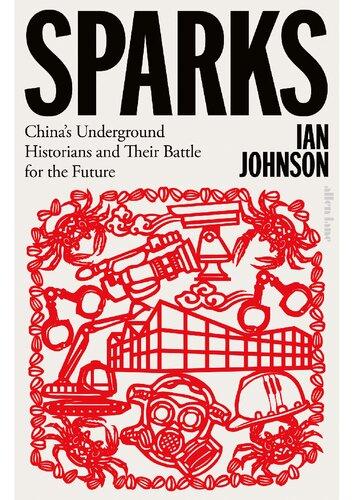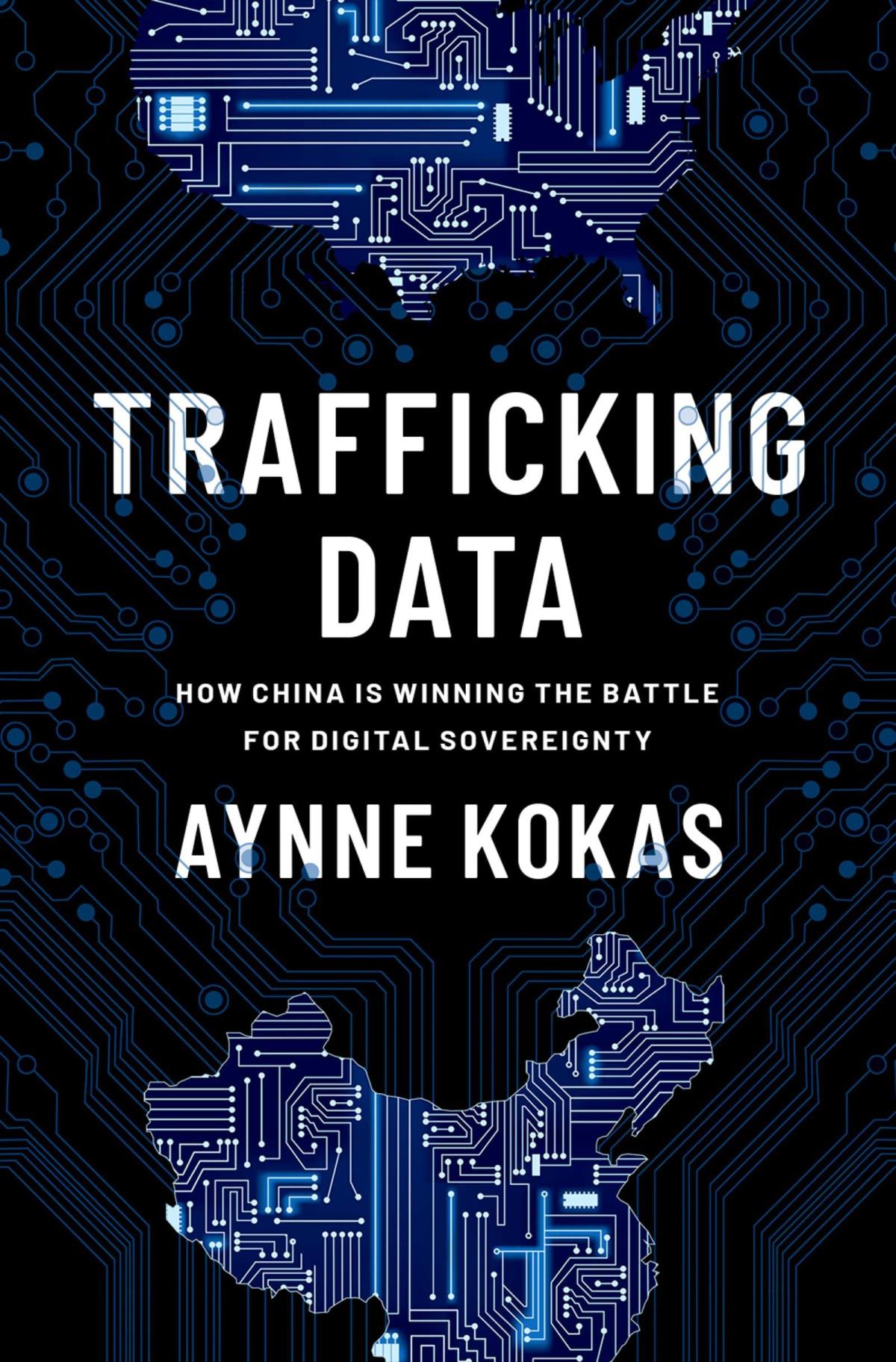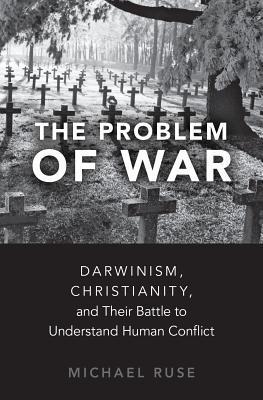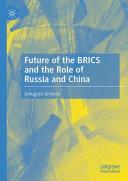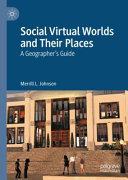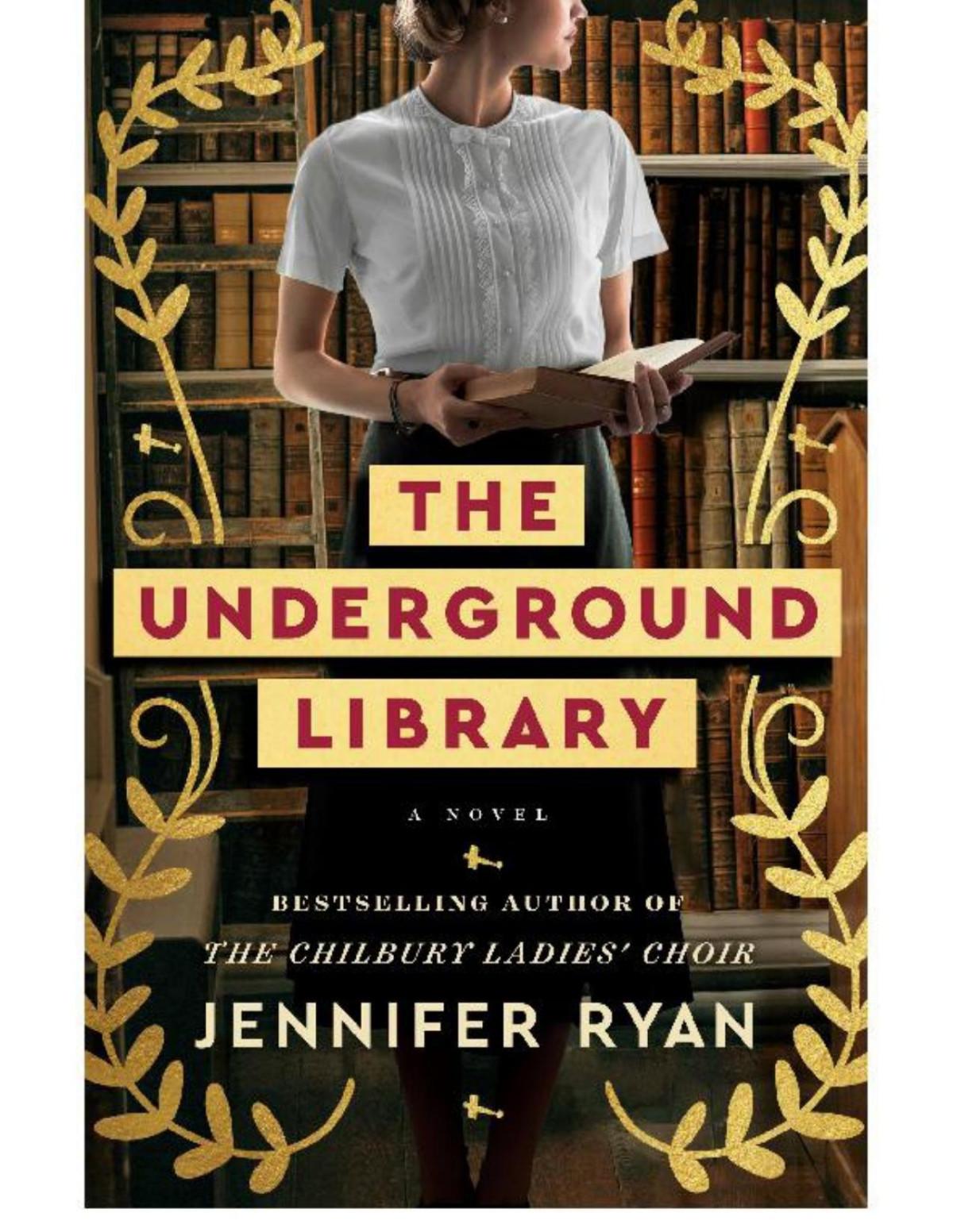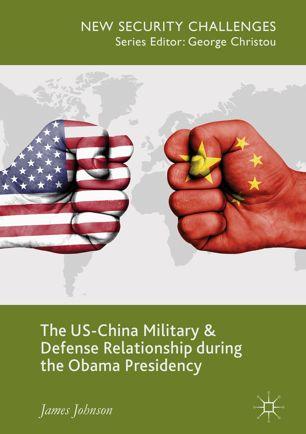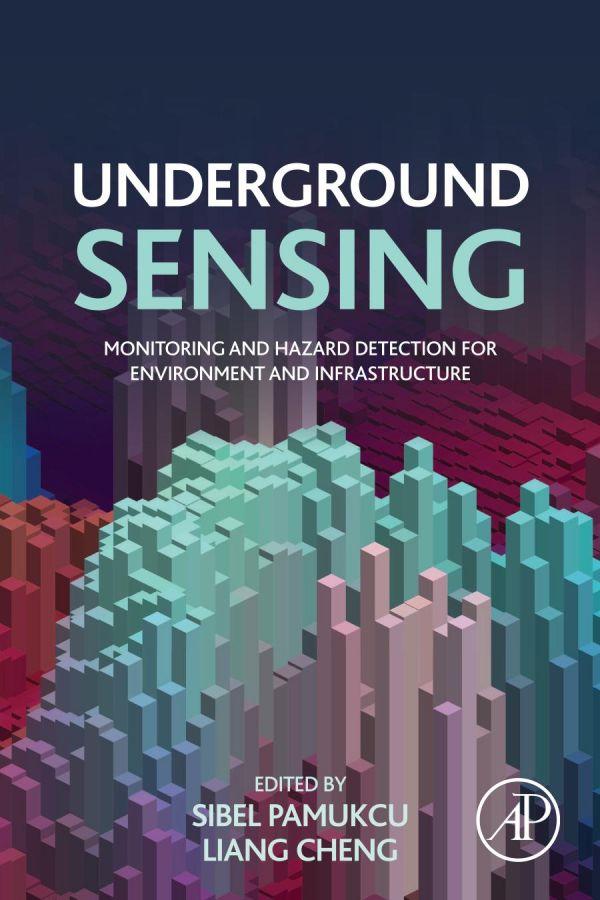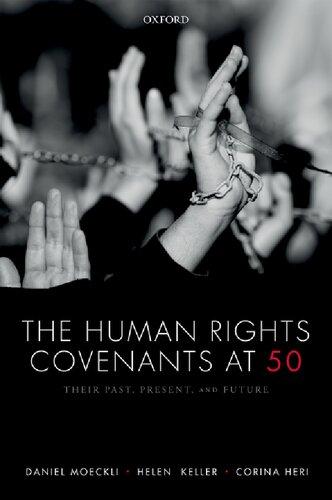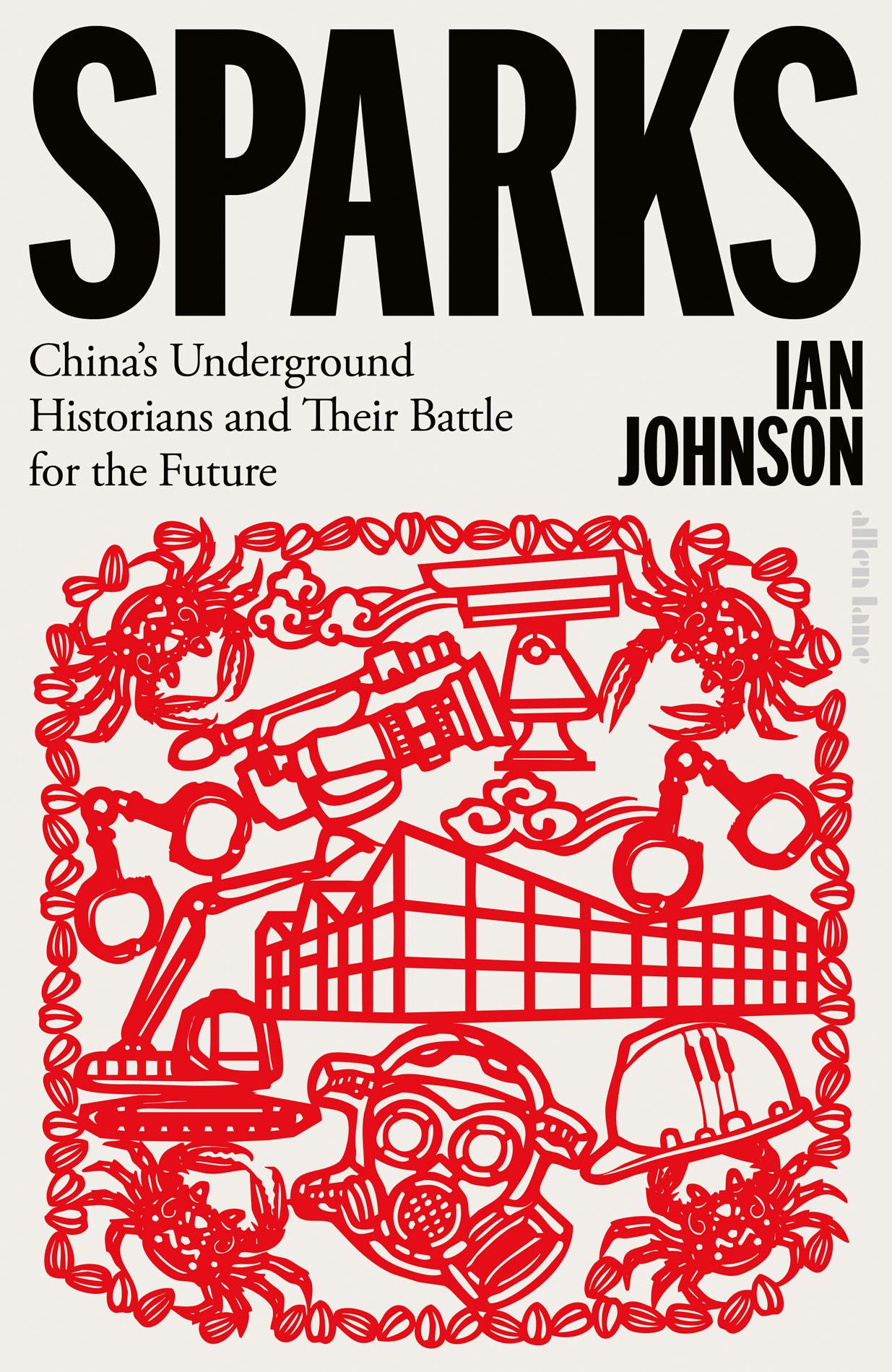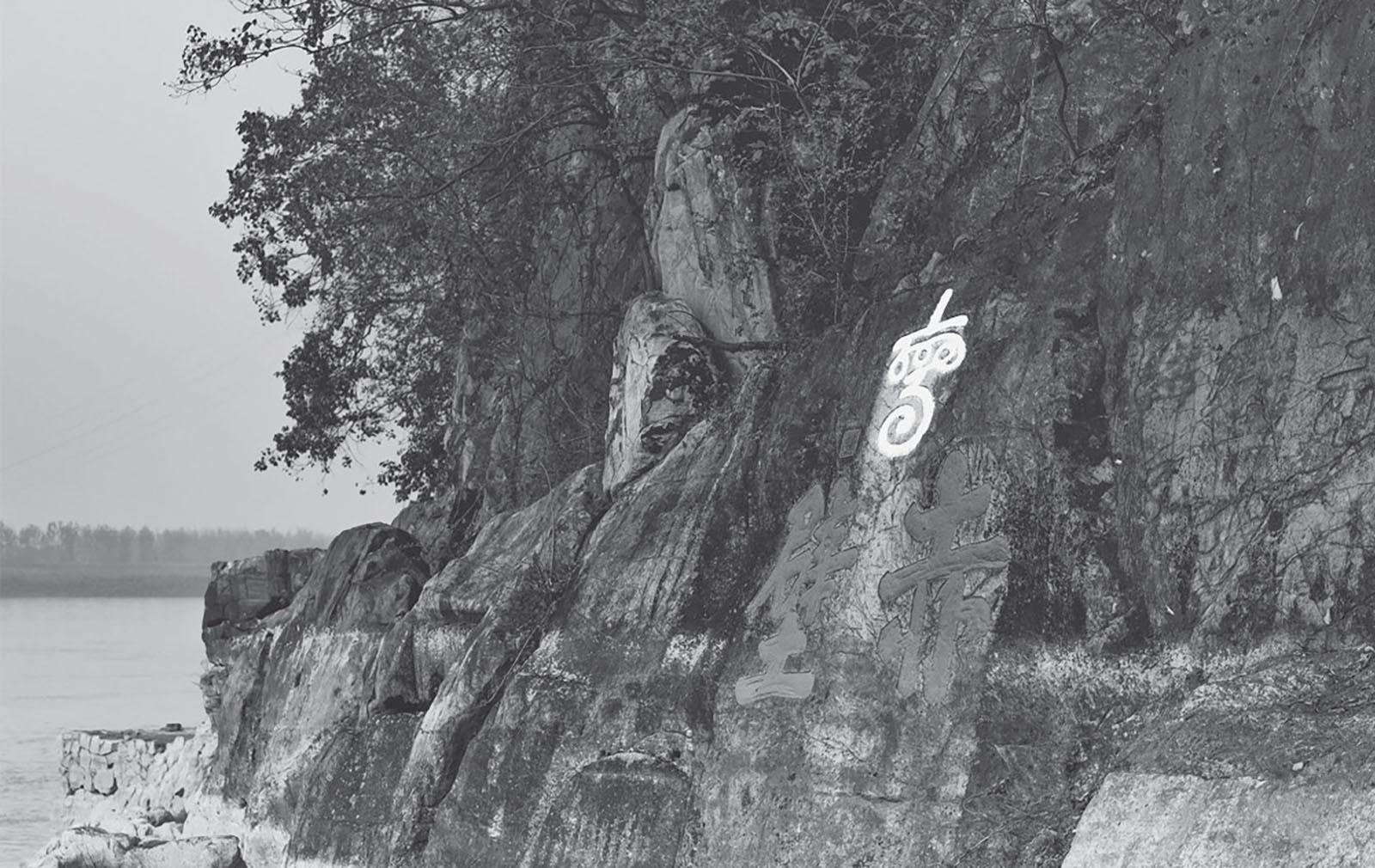Ian Johnson
S PA RK S
China’s Underground Historians and Their Battle for the Future
Contents
Preface
I. THE PAST
1. Introduction: The Landscape of Memory
Memory: The Hexi Corridor
2. The Ditch
Memory: Facing Walls
3. The Sacrifice
Memory: Bamboo Slips
4. Spark
Memory: Etchings
5. History as Weapon
Memory: How the Red Sun Rose
6. History as Myth
Memory: National Museum of China
II. THE PRESENT
7. The Limits of Amnesia
Memory: A Landlord’s Mansion
8. The Lost City
Memory: Snow’s Visit
9. The Gateway
Memory: Bloodlines
10. Remembrance
Memory: Tie Liu’s Cafe
11. Lay Down Your Butcher’s Knife
Memory: Videoing China’s Villages
12. Virus
Memory: Soft Burial
13. Empire
III. THE FUTURE
Memory: The Lost Warehouses
14. The Land of Hermits
15. Conclusion: Learning to Walk Underground
Appendix: Exploring China’s Underground History
Acknowledgments
Notes
Bibliography
Illustration Credits
Index
Even in the darkest of times we have the right to expect some illumination, and that such illumination may well come less from theories and concepts than from the uncertain, flickering, and often weak light that some men and women, in their lives and their works, will kindle under almost all circumstances and shed over the time span that was given them on earth—this conviction is the inarticulate background against which these profiles were drawn. Eyes so used to darkness as ours will hardly be able to tell whether their light was the light of a candle or that of the blazing sun.
—Hannah Arendt, Men in Dark Times
Preface
If one trend unites people around the world, it is how history has become a battleground for the present. Perhaps it has always been this way; humans have no sure way of predicting the future and so search the past for clues. Certainly if we look at our own countries today, whether in Africa, the Americas, Asia, or Europe, history remains contentious. Americans still debate the centrality of slavery to US history. Europeans grapple with the brutality of their colonial empires. Young Africans unearth buried memories of the Biafra War and the apartheid era. One could easily include Japan, Singapore, India, and dozens of other countries where events that occurred before most people were born have become crucial to shaping the future.
Nowhere is this idea more potent than in China, which for millennia has been obsessed with the interplay of past, present, and future. For modern Chinese leaders, history legitimizes their hold on power: history chose the Communist Party to save China; history has determined that it has succeeded; and history blesses its continued hold on power. This history is of course written by the party, which employs vast armies of scribes, filmmakers, videographers, and journalists to push its version of events, both recent and ancient. Through them, the party controls textbooks, movies, television documentaries, popular history magazines, and even video war games.
But a growing number of Chinese see the Party’s monopoly of the past as the root of their country’s current authoritarian malaise. In their eyes, too many people misunderstand the problems of the present because the Communist Party misrepresents the past. If people grow up thinking that the Chinese Communist Party played a key role in fighting the Japanese, took power thanks to popular support, and is led by a group of meritocratic patriots, then they will
have a hard time understanding why China is prone to purges, corruption, and political violence.
This conviction of history’s importance drives a movement of underground historians that has slowly gained momentum over the past twenty years. I call these people historians as a shorthand for a broad group of some of China’s brightest minds: university professors, independent filmmakers, underground magazine publishers, novelists, artists, and journalists. Some are outsiders and might be thought of as dissidents, but most have one foot inside the system, where they continue to hold jobs, own property, and raise families. All of them risk their careers, their futures, and prison to publish samizdat journals, banned books, and independent documentary films. They seek to correct the Party’s misrepresentation of the past and change their country’s slide toward ever-stronger authoritarian control. And they do so by using new technologies to publicize the regime’s failings, often linking current problems to debacles of the past.
Concern for the past has a long tradition in China. Just as today, emperors and kings employed official scribes to write authorized histories. But unofficial historians also existed. They wrote books known by the evocative name yeshi, which literally means “wild” history. Today, the more common term is minjian lishi, or grassroots history, something akin to what in other countries is called counter-history. I use all of these terms but gravitate toward “underground history, ” because it captures the asymmetrical battle between a few, often beleaguered citizens opposing an overwhelmingly strong state.
China’s underground historians are inspired by another idea from traditional Chinese culture: the jianghu. The term literally means “rivers and lakes, ” and refers to the untamed world beyond the realm of courts and commercial centers. In ancient times, these areas served as hideouts for bandits, brigands, and others who lived outside the law but whose lives were governed by strict codes of honor. Jianghu can mean an anarchic free-for-all, but more often it evokes a world of sworn brother-and-sisterhoods committed to righteousness and justice. Jianghu historians have existed since the start of the People’s Republic but have taken on crucial importance in recent years. For
the first fifty years of Communist rule, they were isolated individuals. Their articles, artworks, and books were quickly seized by the security apparatus. Few even knew they had existed.
But over the past two decades, underground historians have melded into a nation-wide network that has survived repeated crackdowns. Through digital technologies, such as PDF-style magazines and books, downloadable videos, and other creative ways of bypassing censorship, they have produced easily shared works that challenge the Communist Party’s whitewashing of history. These technologies and stratagems have allowed China’s counter-historians to withstand intense government pressure. Many work quietly and privately when faced with suppression but jump into the public fray when the government is overwhelmed by mass unrest, such as during the Covid lockdowns between 2020 and 2022.
Maybe just as important, digital technologies have allowed young Chinese to rediscover a lineage of like-minded people stretching back to the pre-history of the People’s Republic. Books that were once available only in foreign research libraries are now easily shared. Stories of heroic resistance fighters are documented on films that are circulated on the sly. Taboo topics such as the murder of hundreds of thousands of small landowners in the early years of the People’s Republic are explored in deeply researched historical fiction. Artworks fill in the visual gaps of heavily censored historical archives. Where critical thinkers in China once felt alone, they now share a powerful collective memory of Chinese people standing up to authoritarian rule. This, perhaps more than anything, inspires them to wave after wave of action, despite harsh lockdowns and lockups.
This book documents the rise of China’s underground history movement over the past twenty years, its continued importance during the rule of Xi Jinping, and its implications for China’s future. After studying in China from 1984 to 1985 and working as a newspaper correspondent between 1994 and 2001, I returned to Beijing between 2008 and 2020, focusing on longer-form journalism and books. I visited underground historians at home and in the field. I read their books, watched their films, and followed their
battles on social media. I saw their room for action shrink. Often it seemed they were simply able to endure, but when protests erupted, they were quick to join and influence public movements. I realized this was a story not just of survival but of active resistance. It made the most sense to me to let this account unfold on three planes. One is China’s geographic space. This allows us to trace the slowly shifting center of gravity of China’s counter-history movement, from the cradle of the revolution in China’s northwest to its cultural heartland, its arc southward to Hong Kong, and in recent years, its use of overseas allies and digital platforms. This movement in space is matched by a shift in time: from past to present to future. These three eras make up this book’s three main sections. In the first, which takes place mainly in China’s northwest, we focus on the Communist Party’s founding and its early years of running China, a time of intense violence that left deep scars on the national psyche. In the second section, the present, we see efforts over the first decade of Xi Jinping’s rule to challenge the Communist Party’s domination of history. And in the third section, the future, we see events such as uprisings in Hong Kong and ethnic minority regions, and the Covid protests in the 2020s, that indicate future trends and potential for political change. The third level, and the one that binds the sections together, are the personal stories and works of underground historians. The reader will encounter many people and stories throughout this book, but two accompany us from start to finish. One is the documentary filmmaker Ai Xiaoming, whom we meet in chapter 2 as she makes a film about a notorious labor camp in China’s northwest. The other is the journalist Jiang Xue, who uncovers her family’s tragedy and researches the story of a 1960 student-run journal called Spark—the inspiration for this book’s title. Ai and Jiang’s stories are woven around half a dozen other important figures from today’s counter-history movement, such as the filmmaker Hu Jie, the samizdat history journal editor Wu Di, and the historian Tan Hecheng. The context for these people and their work is centered in three chapters—5, 6, and 7—that focus on the role of history for the Communist Party before Xi, Xi’s own use of history to cement his rule, and finally how digital technologies
have allowed China’s truth-tellers to challenge the party’s misuse of history.
Separating these main chapters are a dozen vignettes that I have labeled “memories. ” These are based on the early 20th century concept of “places of memory, ” which are physical locations where history resonates—battlefields, museums, or execution grounds. In recent decades, new technologies have broadened this concept to “theaters of memory, ” which include movies, books, and the media. Based on this idea, I offer sketches of people, places, and iconic works of counter-memory that demonstrate the ambition of China’s underground historians: to write a new history of contemporary China in order to change their country’s future.
Some readers will immediately wonder what this means for China’s trajectory. I venture some ideas in the conclusion, but let me mention two broad points worth keeping in mind as you start reading.
First, this book introduces us to people inside China who are worth knowing in their own right. They are making works of scope and ambition equal to the great writers or filmmakers of the Cold War—people like Solzhenitsyn, Kundera, or Forman. 1 It is worth remembering that many of these giants of Eastern Bloc intellectual life had a limited impact on their countries at the time that they lived and worked there. It was only when these countries began sliding into economic stagnation that ordinary people began to seek out alternative ways of understanding the past as a way to assess the future.
Already, it is clear that China’s boom years have passed. Many young people have responded with passivity. They talk of dropping out—“lying flat” or “running” away are two popular terms.
But this alienation can quickly flip to action. The Covid lockdowns are one especially relevant example, when many people in this book, such as Ai Xiaoming and Jiang Xue, were thrust back to public prominence after years of being marginalized. On New Year’s Day 2023, for example, Jiang Xue published one of her most popular articles. 2 It came a few weeks after a wave of
protests across China helped convince the government to drop its draconian policy of pandemic lockdowns. She described the year of lockdowns and frustration, and the cry for freedom that young people had made, drawing on her wide reading of Eastern European intellectuals to make sense of China’s ossified political system. The article was quickly posted and reposted on Telegram, WeChat, and other platforms. On WeChat it was blocked, but various versions of it were reposted repeatedly.
It is not difficult to construct similar scenarios that push her and others back to the fore, where their years of research and writing for smaller audiences help the broader public make sense of their world better than government propaganda. And when this happens, it would make sense for us to be familiar with these people, their history, and their network.
The second broad point is that these lives and works challenge conventional wisdom on how to view China.
After leaving China in 2020, I spent an academic year in Singapore at the Asia Research Institute and then started working at the Council on Foreign Relations in New York. From these perches, I could see firsthand the way that China has been written off by many of our opinion and political leaders. The dominant way of understanding China is that nothing happens there except a string of dystopian horrors: surveillance, cultural genocide, mindless nationalism.
As someone who lived in China for more than twenty years and has written extensively about religious and political persecution, I know that these problems are real. But so, too, are Chinese people with other visions. Critical voices have not been silenced. This raises questions about how to engage with China, something I explore in the conclusion.
The persistence of China’s counter-history movement also challenges assumptions about the Communist Party’s ability to dominate society. As you will see in the coming pages, the party does not always win. Despite overwhelming odds, people inside China today still publish works and make films that challenge authority. Their ideas continue to spread, and when problems in society reach a critical point, people look to them for ways of
thinking about their country. This is why Xi Jinping has made control of history one of his signature policies—because he recognizes counter-history as an existential threat.
The most important question that this book raises is whether amnesia really has triumphed. Change in any society usually comes through small numbers of people who start as outsiders. Sometimes, with dedication and persistence, their ideas become mainstream. Saying that “most people” don’t know or care is a truism applicable to almost every society in every era: what matters is that many Chinese do know and continue to battle, today, to change their society.
This book is not a simple story about right triumphing over might. Just as China’s surveillance state has not won, neither have its opponents. This is why I opened the book with Hannah Arendt’s statement about people in dark times. We are so accustomed to the darkness of today’s China that any sort of light blinds us. Perhaps by the end of this book you can decide if these people are flickering candles or blazing suns—or if they are both: flickering today but blazing tomorrow.
Part I
T HE PA S T
Nothing but earth is strong enough to withstand the burden of memory.
—Maaza
Mengiste, The Shadow King
Introduction
The Landscape of Memory
The tectonic plates that form China have left it a checkerboard of mountains and rivers and memories. From the south, the Indian plate pushes up into the Eurasian, creating the Himalayas and the vast Tibetan plateau that almost cuts the country off from the rest of the continent. Rippling outward are smaller mountain ranges that ebb and flow toward the Pacific Ocean, like deep swells heaving through the land. Slicing through them are broad rivers that race down from the western highlands toward the coast. For travelers wandering among these ranges and rivers, it is hard to travel 200 miles in any direction1 without hitting a natural barrier. While many people think of China as remarkably homogenous—thousands of years of continuous history and more than 91 percent of the population ethnically Chinese—its geography has created another reality: a patchwork of distinct regions, each with its own climate, languages, and history.
As if to wrest control over this fierce land, Chinese people have turned it into a canvas. For thousands of years they have etched their thoughts on the rocks and cliffs that loom over them. In a country with such a long history, every hill and vale are home to myths, legends, battles, massacres, and acts of beauty. For millennia, travelers visited these sites and set down their thoughts, which were carved directly onto nearby rocks and cliffs—ancient graffiti that brings the past to life.
Some of it carried more than a note of boasting: I came here because I am a person of distinction who has read history, and I
have a few ideas of my own. But a few choice words could also add to the site’s meaning, helping future travelers think about history in a new way—a dialogue with the past, inscribed in stone. This might seem strange to modern sensibilities, where nature is seen as authentic only when it is pristine. And indeed, some Chinese writers have protested at the proliferation of inscriptions. But for most people this was rarely seen as a violation. Instead, this conversation with the past enhanced the present.
One of the most famous of these places is a red-colored cliff overlooking the Yangtze River upstream from the modern city of Wuhan. In the winter of 208 to 209 a decisive naval battle was fought there between the military dictator Cao Cao and an alliance of smaller states resisting his invasion. The underdogs won through ingenious tactics, making the Battle of Red Cliff similar to how many Westerners remember the Battle of Trafalgar: a brilliant victory that thwarted a tyrant’s ambitions (even if these, like all stories, are more complex).
The location was immediately famous but only became a pilgrimage site after a visit there eight hundred years later, in 1082, by Su Dongpo. Su was one of China’s most famous poets and an official in the emperor’s court. He had been banished for opposing authoritarian-style reforms and was living in poverty on a farm near Red Cliff. Out on a boat one night with a friend, drinking wine and thinking of their fate, Su floated past the cliff. Back home, he wrote a poem about his impressions. Later that year he returned and wrote another.
The two works are among the best known in Chinese literature, not only for their language but because Su was also a famous calligrapher. Miraculously, one of the poems that Su himself wrote out with a brush on paper survived the centuries and is now one of the most precious pieces of art in the Chinese world. In the years that followed Su’s visit, a shrine was built at the cliff to honor him, as well as a pavilion to house copies of his calligraphy.
The language and calligraphy made the poem famous, but it was the context that has inspired people over the past millennium. Su was commenting on what even then was an ancient battle. But his message was eternal: the righteous person’s resistance to tyranny.
Readers would think of Cao Cao’s defeat and how good had won, but also how Su himself was in exile for standing up for right. This universal idea—that in the end right triumphs over might—is central to the poem, as is the exile’s sorrow, struggle, and loneliness. Without directly mentioning any of this, Su makes clear his tumultuous emotions—but also how he is unbroken.
In the first of the two odes, Su describes his unease: floating down the mighty Yangtze River “over ten thousand acres of dissolving surface which streamed to the horizon, as though we were leaning on the void with the winds for chariot, on a journey none knew where. ” He mentions the constellations in the night sky, making clear that he is facing the capital, his poem an entreaty to the emperor.
As they drift, Su’s friend laments their fate. While towering figures like Cao Cao made history here, the two of them are nothing more than “infinitesimal grains in the vast sea, mourning the passing of our instant of life. ” Su disagrees.
Do you really understand the water2 and the moon?Here, it flows by yet never leaves us; over there, it waxes and wanes without growing or shrinking. If you look at things as changing, then Heaven and Earth do not last for even the blink of an eye. If you look at them as unchanging, then I along with everything am eternal.
For people of Su’s era, the political reading was clear. The court was pursuing gains that would not last—flowing away like the river’s water, waning like the moon’s vanishing light—while his values were permanent, just as the river never runs dry and the moon never really disappears. The critique was so obvious that when Su sent a copy of his “Ode to Red Cliff” to a friend, he added the warning: “With so many painful and dangerous matters … bury this away deeply and do not bring it forth. ”3
Today, Red Cliff is one of China’s most popular tourist attractions. Instead of floating on a skiff, people come on giant tour boats, some to gorge on all-you-can-eat buffets, others for no reason other than it is on every Chinese person’s bucket list.
But many make the journey in order to commune with Su. They think of him in exile, of Cao Cao’s arrogance, of the innumerable painters over the centuries who depicted Su against the cliff, seeing in his resistance their own struggles against authority. And all of this washes over these visitors: some grow silent, or nod to each other, or murmur a line from the poem when they see the promontory and gaze at two enormous characters that admirers of Su in the 15th century engraved on the sheer cliff face and painted in the brightest vermillion: chi bi, red cliff. 1
In China, history and morality are inseparable. The traditional task of historians was to judge dynasties and rulers, partly to set the record straight but also to comment on current affairs. That is why it was impossible for Su’s allusion to Cao Cao to have been simply a memory of an ancient battle. The only possible reading was to see it as a critique of the current emperor—a tyrant who would be defeated just like Cao Cao. This view of history makes it both judge and juror, collecting testimony and deciding a ruler’s fate. If a dynasty was ruling correctly, then history viewed it well and its rule continued. But if the government ignored the people, if it neglected the affairs of
state, if disasters accumulated, then history would judge it poorly and withdraw the “mandate of heaven. ” This led to two responses: rule justly in hopes that this would bring success and the benediction of history. Or crush dissent so no one would question your right to rule.
This made history a risky enterprise. Most famously, China’s first great historian, Sima Qian, was castrated and then jailed by the emperor for sticking up for an official who was scapegoated at court. After his release, Sima Qian was expected to commit suicide rather than live with his mutilation and disgrace. Instead, he chose to live because he was determined to finish writing the first largescale history of China. That set the template for writing history: it was a sacred calling worth any sacrifice.
One way to try to evade these dangers was to don the hat of the travel writer, visit a famous place, and describe it. The best of these works, like Su’s poem, was not simply coded political criticism but explorations of the timelessness of nature, the folly of life, and the turmoil of the present.
Over the centuries, these places of memory have come to blanket China’s physical and mental landscape. For all the invasions, foreign rulers, and divisions, it is still a land of memory stretching thousands of years. Part of this is because the physical past is so present in China. In Western terms, it would be as if the civilizations of ancient Greece, Rome, and Europe used the same script and cultural references and were transplanted into one geographic area about the size of the United States. Imagine if educated Americans could read ancient Greek, Latin, and most modern European languages, and that many key artifacts of these eras—the Acropolis, the Colosseum, Chartres, and Auschwitz— were located within the continental United States. And that over the millennia famous writers—from Homer to Austen, Sappho to Hemingway—had lived on this same piece of land, visited these sites, and left their thoughts inscribed in stone.
This puts an unbearable burden on current-day events in China. Almost every site in the country is layered over something ancient. Bygones are never bygones. But this heavy past also empowers people. If the ancients dared to speak out, then how can I not? And if I face trials and tribulations, and if I am censored and humiliated,
then wasn’t this always the case? And isn’t it also true that in the end people remember Sima Qian and Su Dongpo, and not the leaders who maimed and slandered them?
The difference between then and now is scale. The People’s Republic of China is not just another chapter in China’s long history. The modern bureaucratic state reaches deep into the recesses of the country in ways unimaginable in premodern times. This change occurred over the course of the 20th century, especially after the Communist Party took power in 1949. Founded in 1921, the party went through nearly three decades of purges, putsches, and campaigns to root out dissent before assuming power. By the time the Communists defeated the Kuomintang, or Nationalist, Party after four years of civil war, they were a highly disciplined force led by a core of battle-hardened veterans committed to violent revolution. They were able to push through policy with a singularity of focus that changed almost every aspect of Chinese society—some for the better but almost all of it ordered from above and based on coercion.
Central to the tumult was the character of Mao Zedong, the party’s leader: enigmatic, mercurial, ruthless, and at times deluded first among equals. Under Mao’s nearly thirty-year rule, China went through a series of political campaigns that led to the breakdown of normal social relations. State-led violence became part of everyday life. But even after Mao died in 1976 and relative moderates took over, the country has still been buffeted by unrest, crackdowns, harsh treatment of dissent, and brutalizing policies toward non-Chinese ethnic groups.
Just as in earlier times, China’s contemporary leaders try to keep history on their side by telling myth-like stories: a popular uprising brought the Communist Party to power; famines were caused by natural disasters; minority areas like Xinjiang and Tibet have always been part of the country; Hong Kong’s struggle for democracy is the work of foreign forces; the state dealt responsibly in handling the initial outbreak of the Covid-19 coronavirus. The not-so-subtle subtext is that only the Communist Party can save China from chaos and disintegration. Any alternative version of history is taboo. Every country has its foundational myths, but in
China the lack of independent institutions—media, universities, or political parties—makes it difficult to challenge the official version of reality.
Communist Party myths dominate China’s textbooks, museums, films, and tourist spots, and are a constant theme of China’s top leaders. Since taking power in 2012, Xi Jinping has made control of history a top domestic priority. He has closed scores of unauthorized journals and museums and jailed those who oppose his version of the truth. These acts of disremembering warp the country’s collective memory and have succeeded in convincing most Chinese people that even if the party is flawed, it is doing a good job and its opponents are at best unrealistic, and at worst traitors.
Countering this overwhelming state story, modern-day Sima Qians and Su Dongpos are engaged in an epic struggle to document the full picture of contemporary Chinese history. Even during a period that many outsiders see as a “perfect dictatorship, ”4 these independent writers, artists, and filmmakers still produce works about government-induced famines, political campaigns, massacres, and virus outbreaks. Their goal: to challenge, destabilize, and contest the state’s version of reality. With success by no means certain, they carry on, believing that history vindicates the truth.
Many of these figures got their start in the 2000s, which was a period of unusual openness. It wasn’t the most open time since the Communists took power—that title goes to the freewheeling 1980s, when leaders even talked of open elections. Those high-flying days crashed to an end with the 1989 Tiananmen massacre, when weeks of peaceful protests against corruption and for a more open political system ended with the massacre of hundreds by armed soldiers in Beijing and other cities. That set in motion a playbook that the government has followed until today: tight political control coupled with economic development.
But the 2000s were arguably more significant because new technologies allowed for a truly national conversation that involved far more people than the 1980s. Economic reforms had given
people control over where they lived and put money in their pockets, allowing them to pursue their own interests. For some, that meant buying fancy cars or traveling abroad. For others, it meant exploring family histories or problems in society. The internet had begun to grow in popularity, but the government didn’t yet know how to control it. Journalists and activists leaped into the void, publishing hundreds of blogs and journals that exposed official malfeasance.
Underground historians had been exploring the dark corners of the Communist Party’s history since the 1940s, but digital technologies meant that their work could be republished and reach millions of people through social media, blogs, and some traditional media outlets. Documentary film festivals highlighted the work of people who were using new digital technologies, such as cheap handheld cameras, to interview survivors of the party’s misrule—all of it raising questions about the validity of a political system of one-party rule with few checks and balances.
This period of relative freedom ended in the late 2000s. It’s simplistic to say it was all due to Xi Jinping’s taking power in 2012, because the tide had already turned against these critical citizen voices before he became the country’s leader. In 2008, the party arrested future Nobel Peace Prize laureate Liu Xiaobo for helping to organize a petition calling for mild political reform. The following year, the government sentenced him to 11 years in prison. In 2010, it closed the social media accounts of many prominent government critics. In 2011, it shut down the most popular social media commentators.
Xi intensified this crackdown. One of his first moves was to end any possibility of questioning the Mao era, let alone later decades. In January 2013, he said that Communist rule can be divided into two periods:5 the first thirty years (roughly coinciding with Mao’s rule from 1949 to 1976) and the next thirty years of economic and social reforms (from 1978 to 2012, a period when Deng Xiaoping and his handpicked successors ruled). It was not possible, Xi said, to accept one era but also criticize the other. In other words, you couldn’t be for capitalist-style economic reforms and relative
openness while also criticizing the Mao era, or the other way around. You had to accept both. They were two sides of the same coin.
Using logic that would have been familiar to Su Dongpo, Xi said that questioning any era of the People’s Republic’s history meant questioning the state’s legitimacy. The Chinese Communist Party’s rule, he said, is “the conclusion of history. ” To explain the importance of history, he cited a 19th-century Chinese poet, Gong Zizhen. Writing at the start of China’s degradation at foreign hands, Gong wrote: “To destroy a country’s people, 6 start with destroying their history. ” That, Xi warned, happened to the Soviet Union a generation earlier but would not happen to the People’s Republic of China. The Communist Party would make sure that its version of history was drilled into people’s hearts and minds.
To accomplish these goals, Xi shuttered independent journals and film festivals and launched a barrage of counter-counter information. His government massively expanded history museums and tourist sites, underwrote epic history films, and revised textbooks. Capping it all was a 2021 document that rewrote the Communist Party’s history, just the third such undertaking in the party’s one hundred -year history.
One way to understand these efforts is to say they are simply superfluous—a piling on of ideological control that isn’t really necessary. And yet this argument is hard to sustain. Even authoritarian leaders have limited political capital. They focus their attention on things that they perceive of as real problems. Most of Xi’s other major policies have been based on actual threats to his power: his campaign against corruption was because corruption was indeed out of control and that he could leverage it to eliminate potential enemies; he cracked down on Hong Kong because it was a bastion of free speech where underground books and journals were published; and he targets the democratic state of Taiwan because it is a rebuttal to the Communist Party’s myth that only an authoritarian state can effectively rule Chinese people. Likewise, he focuses on controlling history because he believes that losing control of history poses a grave threat to continued Communist Party rule.
Despite the government onslaught, independent voices continue to emerge. In 2016, I participated in a workshop on oral history and met dozens of people from across the country who wanted to know how to document their families and communities. (I write about this workshop in the vignette “Videoing China’s Villages” at the end of this book’s second section.) Even though many of them tread on dangerous ground, they are still active today. Most of the venues where they once showed their films have vanished, but that makes their efforts all the more remarkable. It raises the question of why they have kept at it, and why the government has a hard time suppressing them. Others, such as the editors of the underground history journal Remembrance, continue to publish. As of early 2023, Remembrance was 15 years old and had just published its 330th issue.
I see parallels in the religious communities that I also closely followed during my two decades in China. Faith-based groups and China’s counter historians both seek to improve their country by addressing an inner problem—an unease or a pang of conscience that won’t go away. For those who take the religious path, faith is a way to save the nation by first saving themselves—the idea being that China needs a moral revolution to construct a more just society. For the unofficial historians, it is the idea that a moral society cannot be based on lies and silence.
As I talked to more and more of these underground historians, I began to see that this wasn’t the work of quixotic individuals but an organized effort—not in the sense of a political party or an association with bylaws and membership rolls. The party’s security apparatus would easily crush anything that structured. Rather, it was unstructured and yet at the same time united by common ideas and beliefs that remain widespread across China, so much so that it is not an exaggeration to call this a movement. They share stories, heroes, and common beliefs. Many of them meet each other in person or virtually, and work on the same material. Cumulatively, they have created a collective memory about Chinese Communist Party misrule—something I explore in chapter 7.
Crucially, all these people share a mystical idea about the power of place. They know of Red Cliff and Su Dongpo, of course, but
have created new places of memory, all of them based on events that took place after the Communists took power. Like the ancients, they leave physical markers at these sites of memory: tombstones, memorial tablets, or stones engraved with their names.
Many of these memorials have been erased by diligent government officials. But like Su, today’s commentators make works of art—films, books, essays, poems—that can be suppressed but not erased. They circulate widely and many have gained mythic status. Even if banned, they are still accessible in virtual worlds and are known to many Chinese. They represent an open, humane China that has always existed and for which people have always struggled.
Time and again, people who hadn’t met would tell me of one place where they thought the modern-day version of this movement began. They kept circling back to the far western reaches of China by the Tibetan Plateau. There, the geography led to some of the worst excesses of the Mao era but also to remarkably early efforts to understand China’s then-new authoritarian system. These people, long dead, and forgotten for decades, have been resurrected by Chinese filmmakers and underground historians, forming a lineage of counter-history that leads us to events today and suggests possible outcomes for China’s future.
Memory: The Hexi Corridor
The Hexi Corridor is a narrow string of oases that links China with Central Asia. To its south looms the Tibetan plateau, while to its north is the Gobi Desert. It arches slowly across China like a bent bough, at times almost overwhelmed by the deserts and mountains, a small sliver of irrigated green amid the sands and rocks of China’s far west. Some call it the throat of China: a narrow, fragile passageway essential to the country’s survival.
In ancient times, caravans traveled along this route, forming part of the Silk Road that sent goods back and forth between China, India, Persia, the Middle East, and Europe. Its location meant that armies fought over it for centuries. When China was strong, it controlled the corridor and expanded into Mongolia, Tibet, and Central Asia. When weak, China couldn’t defend the corridor, leaving the heartlandvulnerable to invasion.
The Hexi Corridor itself was never the prize. Its tiny rivers and oases could support only a small population of farmers and traders. Its value was always strategic, and its legacy reflects the interests of distant powers. Remote yet central, it was the site of some of China’s greatest achievements and most grotesque failures, its dry, dusty climate preserving these places of memory from the erasure of nature and humans.
The corridor is best known as the home of Dunhuang and the nearby Mogao Caves. An oasis trading stop on the Silk Road, Dunhuang’s location at the far western end of the corridor made it an inflection point of world culture. For nearly one thousand years, it was where Chinese, Western, and Central Asian cultures merged. Nobles and traders hired artisans to create elaborate Buddhist frescoes that rival the greatest artworks in the world, while a cache of tens of thousands of documents and paintings give a detailed look at life in medieval China and Central Asia. Today, it is a world heritage site, its caves attracting millions of tourists each year.
Heading east along the Hexi Corridor toward the heartland of China, other groups of Buddhist caves appear about every 50 miles. Like Dunhuang, they are always on the right-hand side of the road, the south, dug into the foothills of the Tibetan Plateau—way stations of civilization amid the bleak landscape. The monuments are something like cemeteries: inverted tombstones carved into the rock instead of out of it, but with the same function of honoring the dead.
Midway along the corridor lies one set of caves dedicated to the deity Manjusri. Built by traders starting in the 4th century, they are in remarkably good condition, works of piety that still speak to us. Fronted with colorfully painted wooden buildings, they call out boldly to the valley below: this is how we, your ancestors of more than a millennium ago, honored our dead; what will you do?
The valley offers three answers. One is Jiayuguan, home to the famous 14th-century Ming dynasty gate that marks the beginning of the Great Wall as we know it today. Lavishly renovated and maintained, it is postcard perfect, the walls high and broad, as if to say that the empire you are entering is mighty and strong: tremble and obey! Nearby is the Jiuquan Satellite Launch Center, off limits to most visitors but famous as China’s most important space port. It, too, is a statement of authority and power: here, on the edges of the Gobi Desert the modern state will send humans to the stars.
In between the stone walls and the concrete launch pads is a stretch of desert encasing a more terrible monument. It was built in 1954, but within seven years it was closed, and immediately after that the state began to erase its existence. Its name is Jiabiangou, the Ditch, the most notorious labor camp in China, a place where thousands were worked and starved to death in the late 1950s and early 1960s. Improbably, this field of stone and sand, blown flat by the winds and patrolled by guards, has become a touchstone for Chinese people seeking to recover their past.
The Ditch
It is the Tomb Sweeping Festival, a day of commemoration for the dead. The university professor and documentary filmmaker
Ai Xiaoming has traveled fifteen hundred miles from her hometown in Wuhan to Jiabiangou to document an effort by aging camp survivors to erect a tombstone. Years ago, the camp had been converted into a tree farm, but for decades survivors regularly traveled here to visit their lost friends. In the mid-2010s, however, the authorities declared it a military training area and posted guards during sensitive periods.
“Hello, can we get in? How about to the other side? No? Look, I am an artist. Is it okay if I read out a poem over there?”
Ai is in her early 60s, short, with a round face and persistent, penetrating eyes. She smiles and speaks in a friendly tone, but it’s clear she is on a mission. The camera hangs off her shoulder, pointing toward the yellow sand. It swings back and forth, occasionally filming the cheap canvas shoes and camouflage trousers of local security—laborers who have been recruited by the state and given baggy uniforms. They give Ai no answer. They have probably just been deployed here, sent out to prevent her and the survivors from entering the area. They are silent.
“If you do have a problem with it, just come over and stop me because you haven’t said yes or no. I have no idea otherwise. Because we want to commemorate these people … who should not have died. ” The camera swings back and forth in the spring sun. The yellow ground gyrates. The men’s shoes come and go.
“An unnatural death. They are our ancestors. ”
She finds a location and sets the camera on her shoulder, then zooms into a faded sign that says “Jiuquan Jiabiangou Tree
